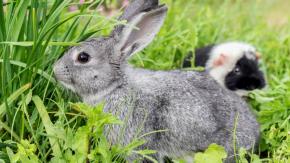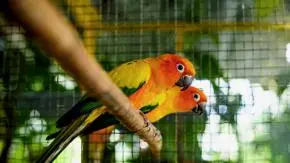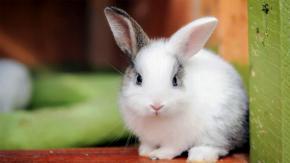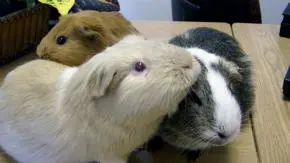With each New Guinea pig encounter, it becomes clear that guinea pigs come in various colours and appearances. What is the cause behind this? Like cats and dogs, Guinea pigs are available in multiple colours and patterns on their fur or skin, depending on which guinea pig breed you prefer.
According to the American Cavy Breeders Association, 13 different guinea pig breeds are available.
When you include mixed breeds and certain breeds that are not yet recognised, you get a wide variety of appearances.
If you did not buy your guinea pigs from a well-known breeder, you might be curious about what breed or breeds have had a role in their development over time.
You’ll Be Amazed When You Discover All The Different Guinea Pig Breeds

Before adopting any new animal companion, you should always gather as much information as possible. Finding out which pig breeds are best suited for your family, which you can do by researching or reading articles.
To choose the most appropriate breed, type, or colour of your new companion, familiarise yourself with the many guinea pig breeds out there. You will also be amazed by the different colours and unique fur textures.
Are you interested in learning more about the many different types of guinea pigs that exist?
Understanding the Different Breeds of Guinea Pigs:
Genuine Pig Breed Hair Length
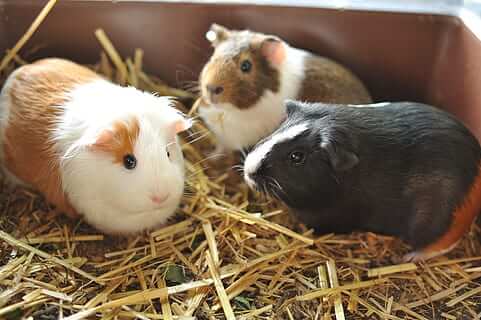
To determine what breed of guinea pig you have, the length of its coat is a crucial factor. You may limit your search by specifying whether the guinea pig breed has long or short hair.
Short-haired pig breeds;
- American
- American Satin
- Abyssinian
- Abyssinian Satin
- Teddy
- Teddy Satin
- White-Crested
- Long-haired pig breeds
- Coronet
- Peruvian
- Peruvian Satin
- Silkie
- Silkie Satin
- Texel
The Skinny breed of guinea pig usually only have patches of hair on its face and feet. When looking at the feet, you will most likely see a Baldwin guinea pig with a tinge of silver in its coat.
Is the coat of your guinea pig smooth, curly, fluffy, full of whorls/rosettes, or a combination of these characteristics?
These pig breeds with smooth-coated fur are the American Satin, Silkie, and Silkie Satin. The most popular guinea pig breed is the American Satin.
Textures Of Different Guinea Pig breeds
Teddy and Teddy Satin are the only guinea pigs with soft coats. These guinea pigs have thick hair that stands up straight on their backs. Breeds like the Peruvian and Peruvian Satin, which have many whorls/rosettes, are included in this group.
What exactly is a whorl or rosette? A little patch of fur that seems to be growing in a circle creates ridges when it meets other whorls/rosettes of the same colour. It has the appearance of many genuine fur “flowers” all over the body.
An unusual coat with multiple textures may represent a mixture of pig breeds. Usually, one whorl/rosette tells you whether the skin is long or short. The Shorthaired Coronet and White-Crested Coronet have only one rosette on their foreheads.
Satin is a texture that may be used in conjunction with the others. Five Satin breeds are similar to the other pig breeds, but their hair has a sheen. This is because the fur is more delicate and almost translucent.
Markings Of Different Guinea Pig Breeds
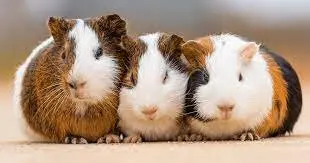
Many colour and pattern variations are available for all recognised guinea pig breeds, including self colours, solids, agoutis, and marked guinea pigs. However, there is one breed that stands out.
The White-Crested breed of a guinea pig is distinguished by having short hair and a smooth coat, as well as a white rosette on the top of its head. Examine the fur of your guinea pig with great care. Is the colour of a single hair the same from the bottom to the top? If not, it may have tan markings.
Let’s Have A Look Together At The Different Guinea Pig Breeds That Exist Out There
Crested guinea pig

Guinea pigs with crested coats are simple to distinguish. As their name implies, they have a crest (or rosette) of hair on the top of their heads that resembles a crown (or halo). Aside from that, they are similar in appearance to the American short-haired guinea pigs, which have short, silky hair.
There are two kinds of crested guinea pigs: the American crested guinea pig and the Self crested guinea pig. The American crested guinea pig is the more common of the two (also known as the English crested guinea pig).
The crest of the American crested will have a different colour from the rest of the animal’s body. The self crested guinea pig, on the other hand, will have a crest that is the same colour as the rest of its body.
American Guinea Pig
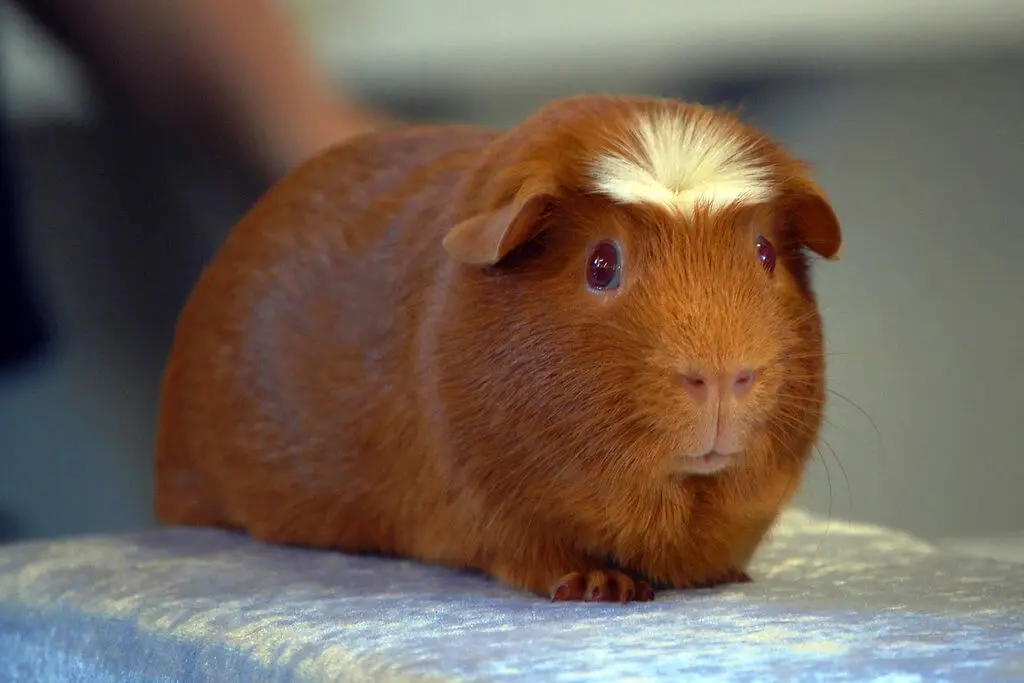
In accordance with Guinea Pig experts, the American guinea pig is most often the famous breed of guinea pig we keep as pets. Their cheerful and active demeanour makes beautiful friends for youngsters to play with due to their positive and active behaviour. Aside from being considerably easier to clean and care for than long-haired guinea pigs, they are also significantly less expensive to keep as pets.
Coronet Guinea Pig

According to experts, Coronet Guinea Pigs are long-haired guinea pigs with a swirl on the top of their heads that divide their hair as it grows longer. Their long coat requires a lot of care since this guinea pig breed is so curious and active.
Texel Guinea Pig
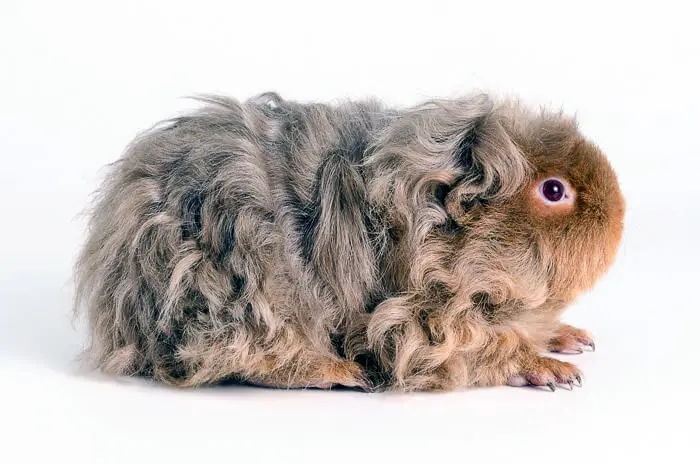
Texel Guinea Pigs resemble Silkies, but their curly coats require frequent grooming. It is believed that their curls can appear as distinct ringlets when their coats are long enough.
They make great show guinea pigs because of the beautiful waves and curls on their coats, but they are best suited to someone who has the extra time to groom them due to their high care needs.
Teddy Guinea Pig
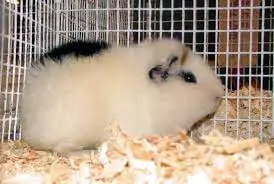
Professionals describe the Teddy guinea pig as having tight, wiry coats that are short and have a kink to them, as well as short legs. Because of their texture, they resemble teddy bears, which is how they got their name. This makes their coats very simple with grooming maintenance, but they do need the odd brushing now and again.
According to Guinea Pig specialists, Teddy Guinea Pig is the only breed of Guinea Pig with an upturned snout. They have one of the most delicate temperaments, making them an excellent choice for a household pet.
Rex Guinea Pig
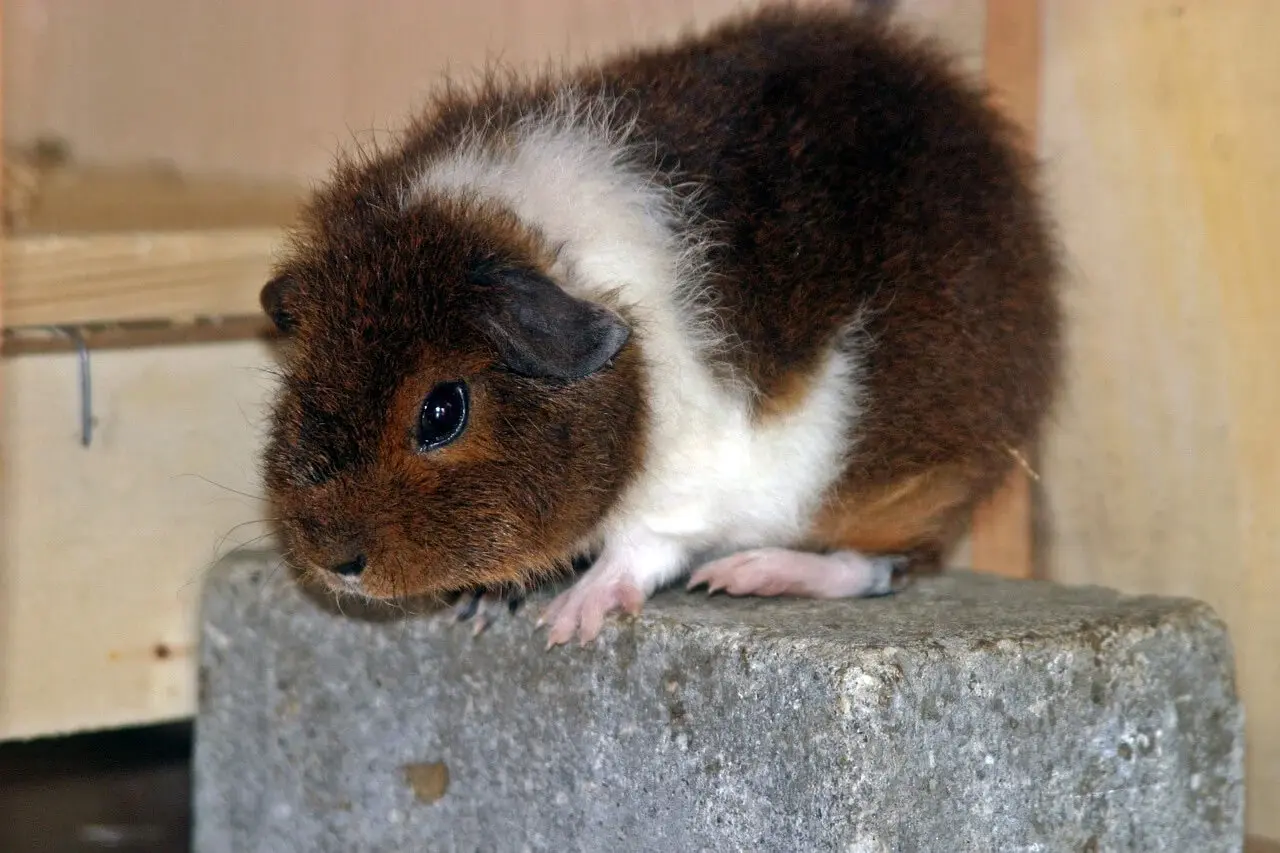
Guinea Pig experts describe Rexes as having a short, thick coat that resembles wool. According to Guinea Pig professionals, they’re also well-known for having drooping ears, which give them the appearance of hedgehogs.
According to experts, Rex guinea pigs are likely to be what you’d call “lap guinea pigs,” if such a thing existed, these guys would fall under that category since they love being held and petted.
Skinny Guinea Pig
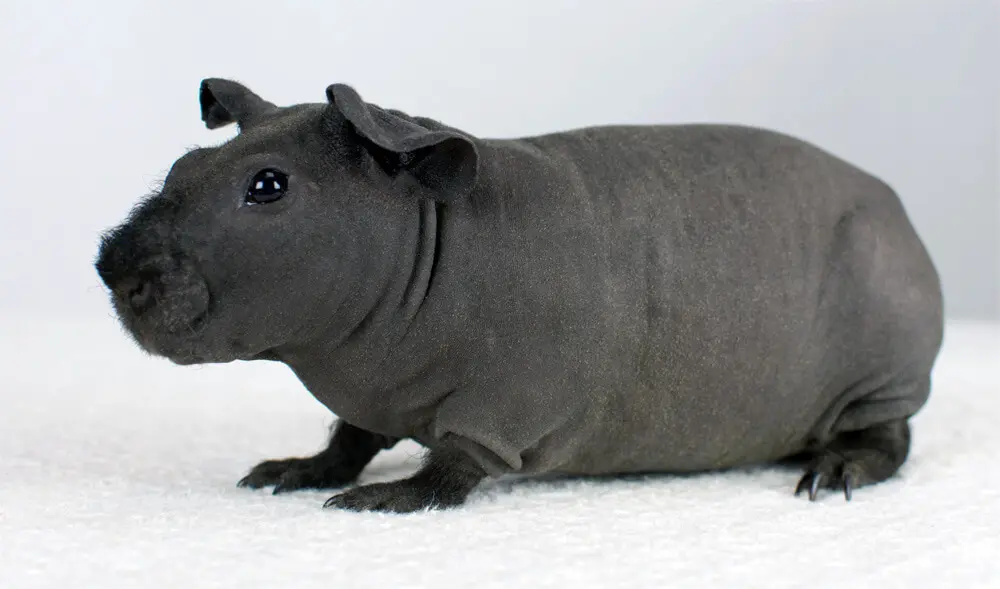
The Skinny Guinea pig, also known as the Skinny pig, has nearly wholly no hair, except for the hair they have on their face, legs, and feet. In this way, your skin may become sensitive and fungal infections or injuries can occur, presumably making it preferable for grownups to keep their eye on this special guinea pig breed.
Skinny pigs are indoor animals, and their cages should have a soft fabric for their floor padding, blankets for the bedding, with a “nesting material”, according to professionals in the business.
Sheba Mini

Sheba Mini guinea pigs, also known as Sheba’s, are frequently referred to as “bad hair day” guinea pigs because of the swirls (known as rosettes) in their coat that cause them to stand out in various directions.
Even though they are adorable and a bit odd-looking, their coat needs much more upkeep. Fortunately, because of their gentle and inquisitive nature, Sheba’s are unlikely to resist you when it comes to that time of day for their daily coat brushing.
Abyssinian Guinea Pig
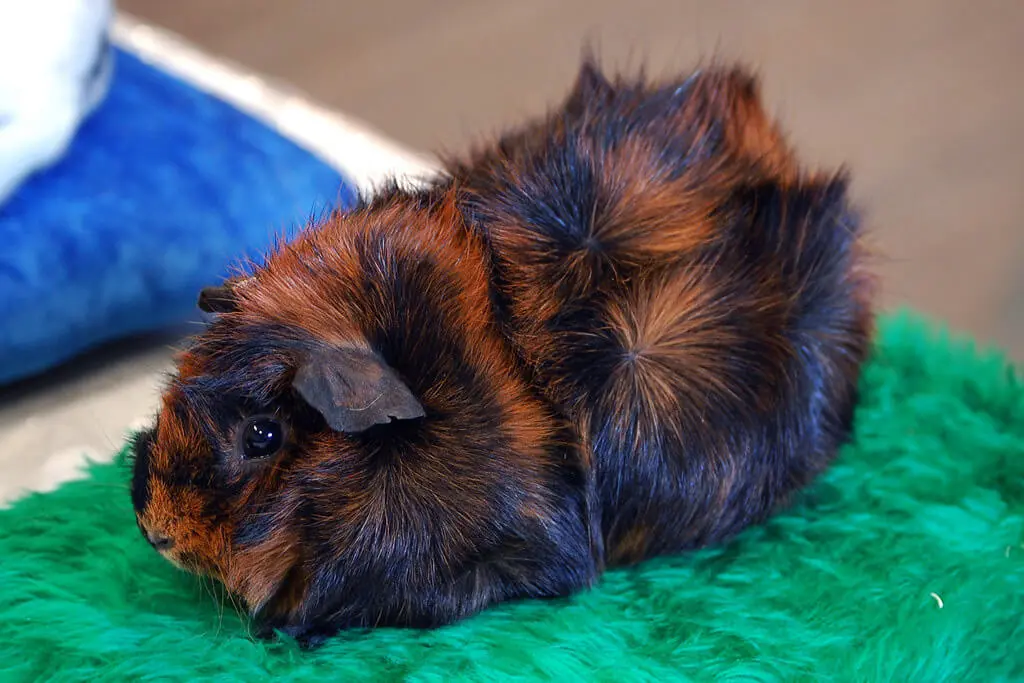
The Abyssinian Guinea Pig has a rough-textured coat that almost feels spiky, unlike other Guinea Pigs. As this guinea pig breed has long hair, daily grooming is beneficial since it can grow up to two inches long.
The skin develops swirls or cowlicks, which you see on their coats called rosettes. Eight rosettes are the average amount you will see on a guinea pig.
Its coat comes in a large variety of colours and patterns. Bridles, roans, tortoiseshells, and solid colours are some examples.
Abyssinian pig breeds are renowned for being loving and sociable, but they may get themselves into trouble if they get too inquisitive. They are excellent guinea pigs for families that are trying something new.
Peruvian Guinea Pig
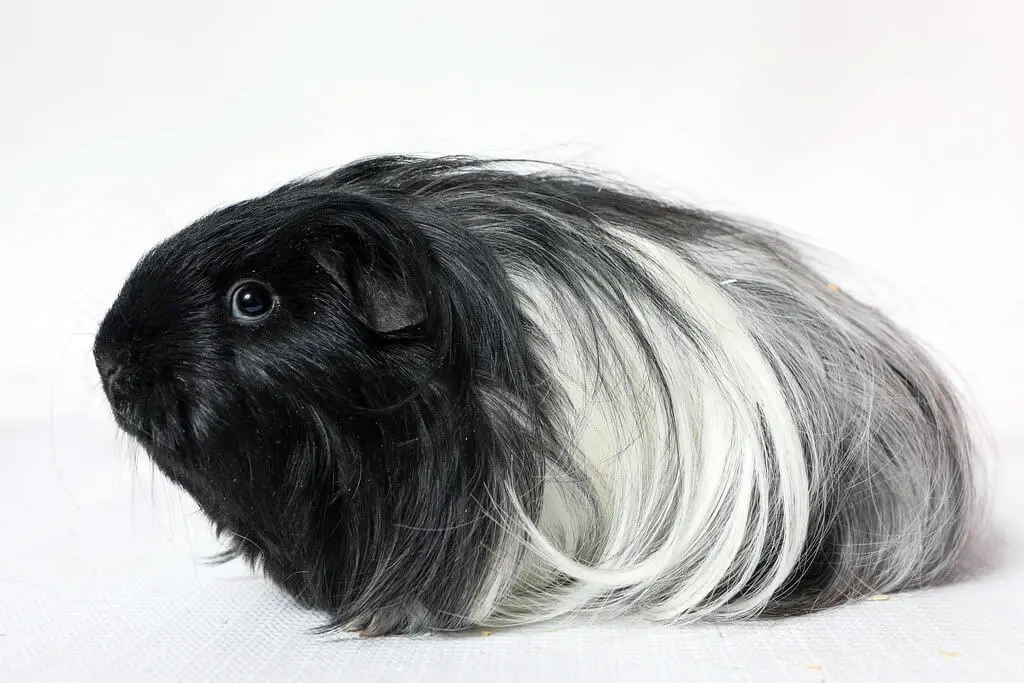
The Peruvian Guinea Pig has long, straight hair than other guinea pig breeds, making it more challenging to care for. Their coat may grow up to 24 inches and needs regular maintenance.
Peruvians wear bangs that hang over their foreheads and may grow long enough to block their vision.
Jackets hang on opposite sides of the spine where the back fur is seen. Two rosettes are usually arranged in their hair, one facing forward and one facing backward. There is no doubt that Peruvians are the most attentive and engaged breed of guinea pigs.
When it comes to genuine pig breeds, what vegetables are the most beneficial?
It is a good source of ascorbic acid to consume capsicum (vitamin C). Approximately ten cavies’ worth of vitamin C may be obtained from one red capsicum, equivalent to one red capsicum. To survive, cavies need 25-30 mg of vitamin C per day, whereas pregnant or lactating sows require 40-50 mg per day.
Capsicum consumption will supply the necessary daily dose of vitamin C for most pig breeds. It also has the added advantage of antioxidants, which help to strengthen the immune system.
Red capsicum provides 189 mg of vitamin C, whereas green capsicum has 80.4 mg and yellow capsicum contains 184 mg. As you can see, it significantly surpasses the guinea pigs’ daily nutritional needs.
Do Guinea Pigs smell because their cages haven’t been adequately maintained?
Absolutely! What you smell is almost always something other than what you are sniffing. Guinea pigs are very well groomed and maintain a high level of cleanliness in general.
The cause of unpleasant odours is usually soiled bedding, leftover food, and untidy droppings. We can also leave our guinea pigs at risk of unpleasant smells if we neglect our pet cages, making them more susceptible to developing some health problems.
The best Guinea Pig Bedding Material is a functional one
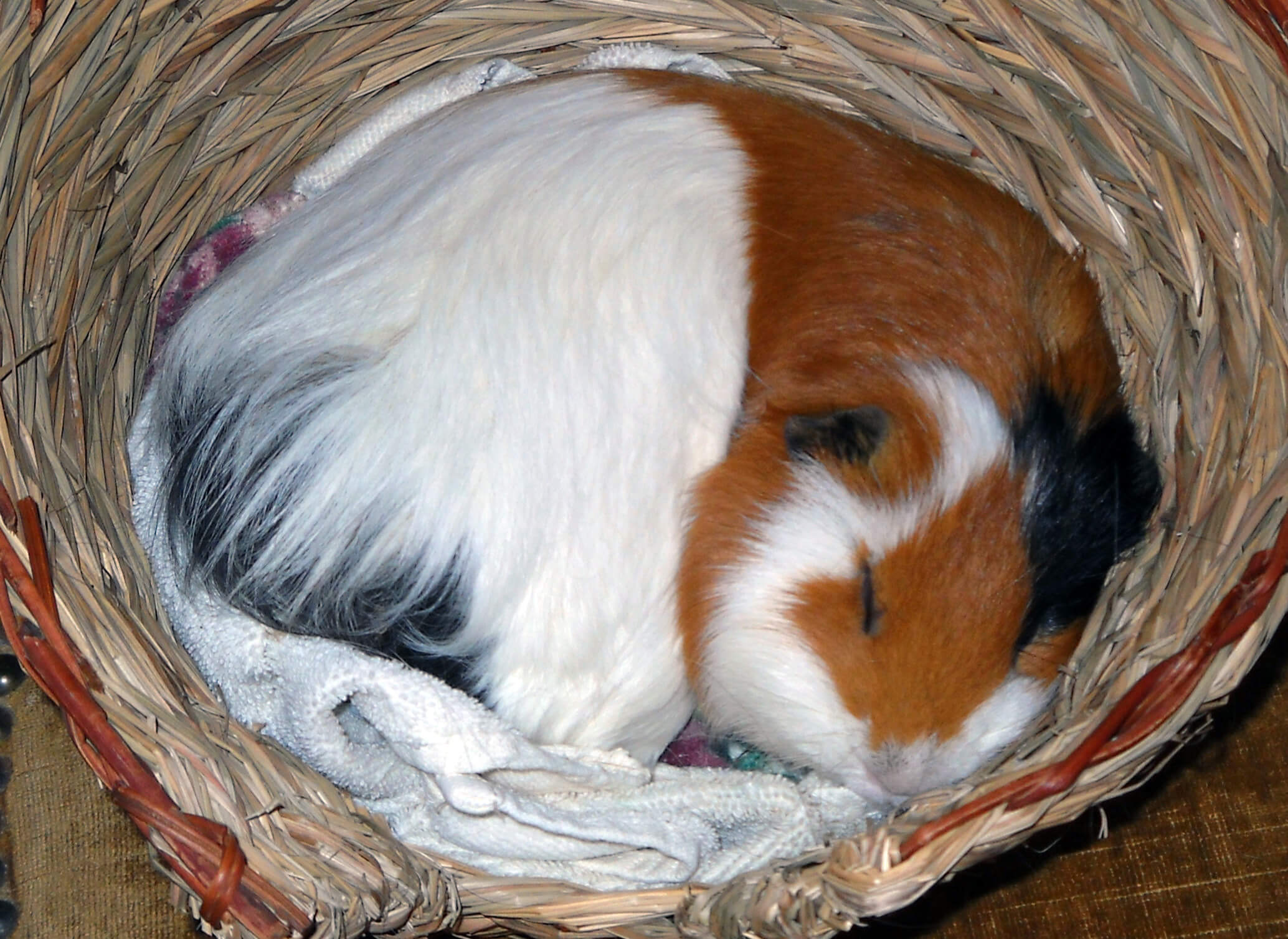
To establish an odour-free cage, bedding is one of the most important items. A bedding material that doesn’t absorb won’t make a difference in reducing odours. Suitable bedding materials, much like fleece, will almost always be successful.
There is a wide selection of bedding for guinea pigs. The most common shavings used are aspen shavings since they are the most effective. If you are looking for this bedding, check your local pet store or an internet retailer.
As well as using litter pellets, paper mulch is more cost-effective for absorbing liquids and odours.
Illness Can cause your Guinea Pig’s Smell.
Is there a foul smell associated with sick Guinea Pigs? Absolutely! Guinea pigs can contract;
- Diarrhea
- Scurvy
- Respiratory problems
- Infections
- Mites
- Lice
- Fungus
It is essential to seek veterinary support when dealing with these hereditary issues. If the cage is kept maintained and cared for, you can avoid most of these problems.
Conclusion

It’s important for every guinea pig, no matter the breed or ability, to have a secure haven in which to find food and shelter, along with a comfortable place to sleep. Ideally, you want to make sure that it is large enough to run, play, and explore without being restricted.
This is made possible by the convenient plastic base and fully openable roof cages. Besides being the ideal home for small pets, these are also extremely easy to clean.
Remember that your guinea pig’s happiness extends to the environment in which they live!


